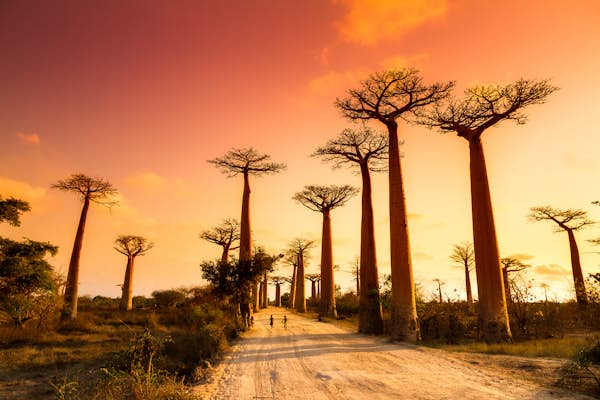When planning a trip to Madagascar, timing can play a significant role in your experience. Variations in weather across this diverse island can impact accessibility and safety, making careful planning essential. Choose your travel dates wisely to maximize your adventures, whether it’s hiking or exploring marine life.
Madagascar is home to unique landscapes and remarkably diverse wildlife. Before you embark on this adventure, acquaint yourself with the country’s rich cultural life and practical travel tips. From navigational challenges to discovering local cuisines, this guide will prepare you for an enriching journey.
Choosing the Right Time for Your Visit
Madagascar’s climate isn’t uniform; it can vary dramatically from one region to another. While the southern part enjoys endless sunshine, the highlands can be quite cold. Roads may become impassable during the rainy season, and cyclones can disrupt travel from January to April.
For hiking or whale watching opportunities, consider visiting between June and September. Meanwhile, for diving adventures, December is ideal. Planning with the weather in mind can ensure fulfilling experiences.
Navigating the Road Conditions
Poor road conditions are a common challenge in Madagascar. The country’s road network has declined, making travel times unpredictable. For instance, it has taken eight hours to cover just 200km in some areas.
While this may sound daunting, understanding this fact can help you plan better. Avoid packing too many activities into your schedule. Be realistic about travel times, considering the vast distances and road conditions.
Incorporating knowledge of road conditions into your plans allows for a smoother journey. It’s wise to extend your stay in regions of interest, minimizing the need for excessive travel.
Wildlife Viewing Strategy
Wildlife viewing is a prime attraction in Madagascar. Timing your visit to coincide with wildlife activity is crucial. Familiarize yourself with optimal months for viewing specific animals.
Different parks offer unique wildlife sightings. The Andasibe region is notable for the indri lemurs’ enchanting cries. Ranomafana National Park and Kirindy Forest provide diverse lemur species sightings.
For the best wildlife experience, equip yourself with a field guide. Skip the movie fantasies; focus on what you want to see and map out the right locations.
Madagascar’s Culinary Journey
Madagascar’s culinary landscape is often overshadowed by international dishes. However, authentic local flavors await those willing to explore. Dive into seafood delights along the coast or try romazava inland.
Local eateries offer a more genuine taste of Madagascar. Notify your tour operator if you’re interested in local cuisine. Antananarivo boasts renowned pastry shops, a delightful surprise for visitors.
For fine dining experiences, some restaurants are worth traveling across the country. Whether it’s a seafood feast or a culinary experiment inland, Madagascar offers incredible surprises.
Respecting Local Customs and Etiquette
Understanding Madagascar’s rich cultural life is important for respectful interactions. Always ask permission before attending ceremonies or taking photos. Learn about local taboos, or ‘fady.’
Greeting locals warmly is highly valued. Ask about their well-being and take cultural cues from interactions. For home visits, bringing a modest gift is appreciated.
Being knowledgeable about and respectful of local customs fosters positive connections. It’s a gesture of respect that enriches your travel experience.
Stay Informed on Safety Advisories
Safety in Madagascar is generally not an issue, yet staying informed is essential. Occasionally, there are localized concerns, like pickpocketing or unrest. Keep abreast with travel advisories from reliable sources.
Local tour operators often have current insights. Planning ahead and staying informed ensures a smooth and safe journey.
Prioritize safety by addressing advisories in your travel plans. Stay connected with trusted sources for up-to-date information.
Visa Procedures Made Simple
Obtaining a visa on arrival in Madagascar is straightforward. Most nationalities can get visas for up to 60 days at international airports.
It’s ideal to pay the visa fee in cash using U.S. dollars or euros. If asked for a gift at customs, politely refuse and you’ll be allowed entry.
Familiarizing yourself with visa procedures simplifies the arrival process, allowing you to focus on exploring Madagascar.
Cash is Still King
Credit cards have limited use in Madagascar. While accepted in some places, cash is the mainstay for everyday transactions.
Bring a mix of U.S. dollars and euros, which are readily exchangeable at banks or exchange offices. Some businesses also accept these currencies for larger transactions.
Being prepared with cash ensures easier transactions throughout your journey. Plan your funds for a seamless experience in Madagascar.
Every aspect of your trip to Madagascar, from planning to respect for local customs, can make your journey extraordinary. Preparation is key!





